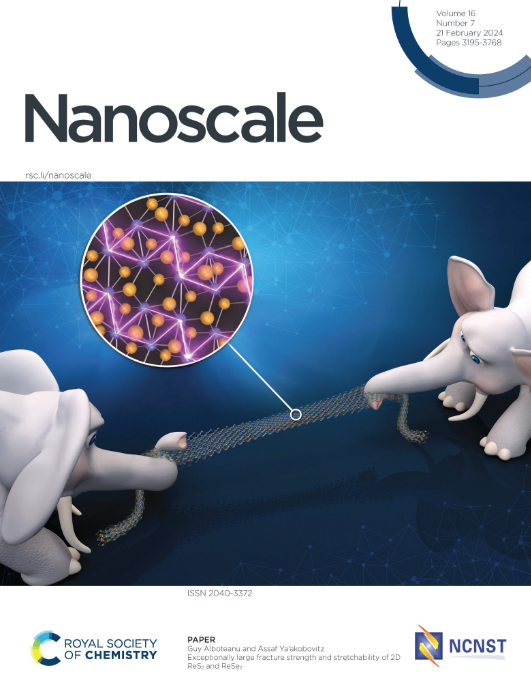Copper nanoclusters with aggregation-induced emission: an effective photodynamic antibacterial agent for treating bacterial-infected wound
IF 5.8
3区 材料科学
Q1 CHEMISTRY, MULTIDISCIPLINARY
引用次数: 0
Abstract
Designing antibacterial agents with broad-spectrum antibacterial effects and resistance-free properties is essential for treating bacterial infectious wounds. In this study, we present the design of copper nanoclusters (Cu NCs) that exhibit aggregation-induced emission (AIE). This was achieved by controlling the aggregation state of ligand layers (cysteine and chitosan) through the manipulation of pH and temperature. The AIE properties, characterized by strong photoluminescence (PL), a large Stokes shift, and microsecond-long lifetimes, enable these Cu NCs to generate significant amounts of reactive oxygen species (ROS) upon light illumination for efficient bacterial elimination without inducing drug resistance. As a result, they effectively inactivate various microbial pathogens, including Gram-negative and Gram-positive bacteria, as well as Candida albicans (C. albicans), achieving elimination rates of 99.52% for Escherichia coli (E. coli), 98.89% for Staphylococcus aureus (S. aureus), and 94.60% for C. albicans in vitro. Furthermore, the natural antibacterial properties of chitosan and Cu species enhance the photodynamic antibacterial efficacy of the AIE-typed Cu NCs. Importantly, in vivo experiments demonstrate that these Cu NCs can effectively eradicate bacteria at infection sites, reduce inflammation, and promote collagen synthesis, facilitating nearly 100% wound recovery in S. aureus-infected wounds within 9 days. The findings of this study are of considerable significance, providing a foundation for the application of AIE-typed Cu NCs in photodynamic nanotherapy for bacterial infections.求助全文
约1分钟内获得全文
求助全文
来源期刊

Nanoscale
CHEMISTRY, MULTIDISCIPLINARY-NANOSCIENCE & NANOTECHNOLOGY
CiteScore
12.10
自引率
3.00%
发文量
1628
审稿时长
1.6 months
期刊介绍:
Nanoscale is a high-impact international journal, publishing high-quality research across nanoscience and nanotechnology. Nanoscale publishes a full mix of research articles on experimental and theoretical work, including reviews, communications, and full papers.Highly interdisciplinary, this journal appeals to scientists, researchers and professionals interested in nanoscience and nanotechnology, quantum materials and quantum technology, including the areas of physics, chemistry, biology, medicine, materials, energy/environment, information technology, detection science, healthcare and drug discovery, and electronics.
 求助内容:
求助内容: 应助结果提醒方式:
应助结果提醒方式:


